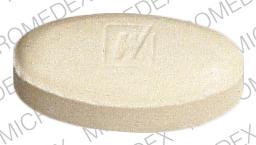Nalidixic acid Interactions
There are 314 drugs known to interact with nalidixic acid, along with 8 disease interactions, and 2 alcohol/food interactions. Of the total drug interactions, 67 are major, 185 are moderate, and 62 are minor.
- View all 314 medications that may interact with nalidixic acid
- View nalidixic acid alcohol/food interactions (2)
- View nalidixic acid disease interactions (8)
Most frequently checked interactions
View interaction reports for nalidixic acid and the medicines listed below.
- Acetylsalicylic Acid (aspirin)
- Adrenalin (epinephrine)
- Aspir 81 (aspirin)
- Calcium 600 D (calcium / vitamin d)
- Chlorpheniramine (Allergy) (chlorpheniramine)
- Cipro (ciprofloxacin)
- EpiPen (epinephrine)
- Ginkgo Biloba (ginkgo)
- Glycerol (glycerin)
- HydroDIURIL (hydrochlorothiazide)
- Paracetamol (acetaminophen)
- Penicillin G Procaine (procaine penicillin)
- Sulfatrim (sulfamethoxazole / trimethoprim)
- TetraVisc (tetracaine ophthalmic)
- TobraDex (dexamethasone / tobramycin ophthalmic)
- Tramadol Hydrochloride ER (tramadol)
- Urso DS (ursodiol)
- Valproate Sodium (valproic acid)
- Vitamin A, D (multivitamin)
- Vitamin B Complex 100 (multivitamin)
- Vitamin B1 (thiamine)
- Vitamin B12 (cyanocobalamin)
- Vitamin B2 (riboflavin)
- Vitamin B6 (pyridoxine)
- Vitamin C (ascorbic acid)
- Vitamin D2 (ergocalciferol)
- Vitamin D3 (cholecalciferol)
- Vitamin K (phytonadione)
- Vitamin K1 (phytonadione)
- Zinc (zinc sulfate)
Nalidixic acid alcohol/food interactions
There are 2 alcohol/food interactions with nalidixic acid.
Nalidixic acid disease interactions
There are 8 disease interactions with nalidixic acid which include:
- colitis
- liver disease
- CNS disorders
- myasthenia gravis
- peripheral neuropathy
- tendonitis
- crystalluria
- diabetes
More about nalidixic acid
- nalidixic acid consumer information
- Compare alternatives
- Reviews (3)
- Side effects
- Dosage information
- During pregnancy
- Drug class: quinolones and fluoroquinolones
- Breastfeeding
Related treatment guides
Drug Interaction Classification
| Highly clinically significant. Avoid combinations; the risk of the interaction outweighs the benefit. | |
| Moderately clinically significant. Usually avoid combinations; use it only under special circumstances. | |
| Minimally clinically significant. Minimize risk; assess risk and consider an alternative drug, take steps to circumvent the interaction risk and/or institute a monitoring plan. | |
| No interaction information available. |
See also:
Further information
Always consult your healthcare provider to ensure the information displayed on this page applies to your personal circumstances.


